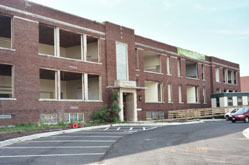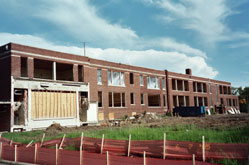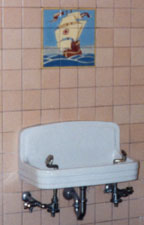The St. Louis Park Historical Society has possession of various PTA scrapbooks that have been made over the years. Information from those books appears in this section, and gives us an insight into the concerns that parents had during the baby boom years.
Over its long history, Brookside School served the Brookside, Browndale, and Minikahda Vista neighborhoods as an elementary school, church meeting place, voting station, fallout shelter, and WWII ration book and stamp distribution center.
THE BUILDING OF BROOKSIDE SCHOOL
Brookside was one of five distinct neighborhoods that made up St. Louis Park, each at quite a distance from each other in the days before automobiles. The Brookside neighborhood started in 1907 when the first subdivision was platted. In 1913 or before, the Brookside Improvement Association was formed, and one of their activities was to see that the neighborhood children got transportation to school. Walking was difficult in Minnesota winter weather, and Lincoln School was all the way down at 37th and Alabama, with no sidewalks.
Minutes from the BIA indicate that in 1918 they worked with the Browndale neighborhood association to find a site for a neighborhood school. On June 5, 1919, the BIA presented a petition to the school board requesting funds to build a neighborhood school. On July 13, 1919, the school board met at the site on Aurora (now Vernon) Ave. to look over the surroundings. Eight lots were available from Thomas M. Tibbs for $4,800.
The South Side Civic Club organized on May 4, 1921. This may have been a reorganization of the Brookside Improvement Association, as the BIA’s minute book ends on April 14, 1920. A neighborhood school was the group’s first priority, and they resolved to vote against a proposed $90,000 Lake Street bond issue for a school until Brookside had a school. They prevailed, and construction of Brookside School was started in the fall of 1921. It was was located on a two-acre site at the corner of Aurora [Vernon] Avenue and Isabelle [41st Street] facing 41st Street. At the meeting on December 13, 1921, members voted on the name Brookside over Minnehaha, Taft, Backus, and Brookdale. (Backus was the name of the dentist who built the house at 4230 Vernon in 1915.)
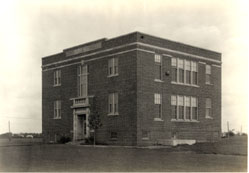
On August 27, 1922, the Minneapolis Morning Tribune reported that Judge Frank M. Nye was to speak at the community housewarming. The school cost $40,000. It was designed by Stebbins & Haxby, architects, and Cyrus Y. Bissell associate. It was constructed by Simon Simonson. The article described it as follows:
It is a two-story brick, tile and reinforced concrete building, with exterior facing of variegated brick trimmed with Indiana limestone. The interior wood work is of birch stained walnuit, with floors of white maple. The building contains four class rooms, each seating 35 pupils, a community room with kitchen, wardrobe, an office and library room. It is modern throughout.
FIRST EXPANSION
In 1922 the South Side Civic Club discussed the acquisition of two lots on Aurora (Vernon) Ave. in order to expand the school grounds. On January 25, 1926, a bond issue of $35,000 to enlarge Brookside School was passed in a landslide. The school was expanded to add four more classrooms. It was at this time that the current front doors were built. One source indicates that there was a fire at the school at this time, but no other information has been found to confirm this.
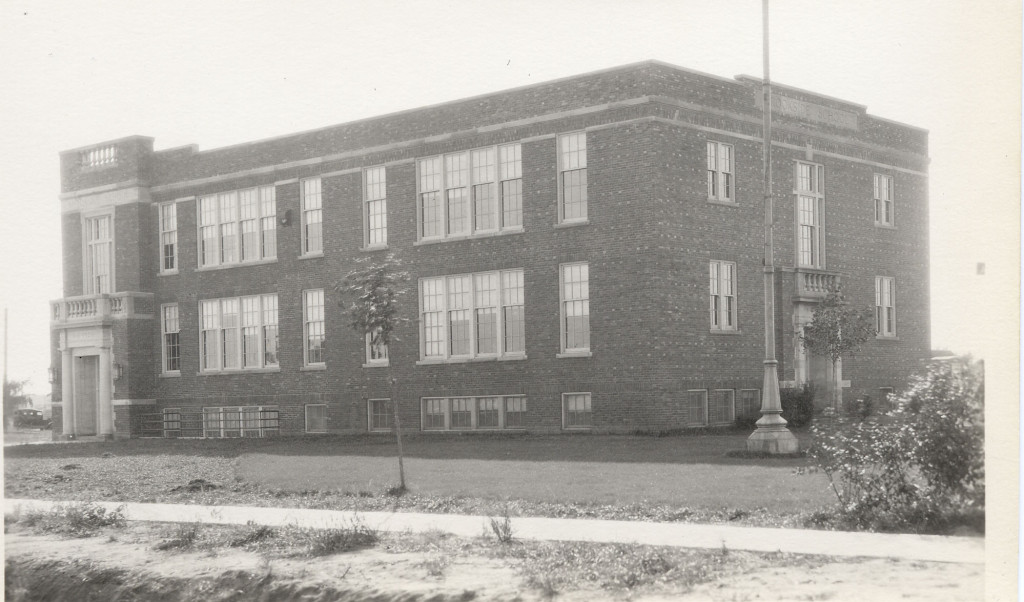
In 1928 the first stop sign was erected at the intersection of 100 and 41st Street; this was about a year after 100/Vernon Ave. (Aurora Ave. then) was first paved.
BROOKSIDE PTA
As at most Village schools, the first parent entity was the Brookside Mothers’ Club. In 1925 the Brookside Mothers’ Club became a membber of the National Congress of Parents and Teachers, as reported by the Echo. The Brookside PTA was formed in 1931. Its first president was Mrs. D.C. Beard. The Mothers Club continued as a separate entity for awhile but eventually the two organizations merged. In 1935 the Brookside Mothers Club President was Mrs. Jeannette Andrews. The President of the Brookside PTA was Mrs. M.X. Jackley. In 1939 the President of the Brookside Mothers Club was Mrs. John L. Malmstedt, and the President of the Brookside PTA was Harry O. Nelson.
In 1936 Ethel Baston became Curriculum Director for the Park School system, and was replaced as Principal by Erwin Welke. Welke had come to Park in 1935 when he was hired as Principal at Lincoln School.
During the Depression, students at Meadowbrook raised vegetables for the cafeteria in the gardens located on the front lawn where the playground later was.
In 1943 Principal Welke became Audio-Visual Director for the School system and was replaced by Lucille Swelin. Mrs. Swelin had taught at Brookside since 1929. She served until 1968, when she was assigned to be Principal at the new Susan Lindgren Elementary School. Mrs. Swelin passed away in December 1997.
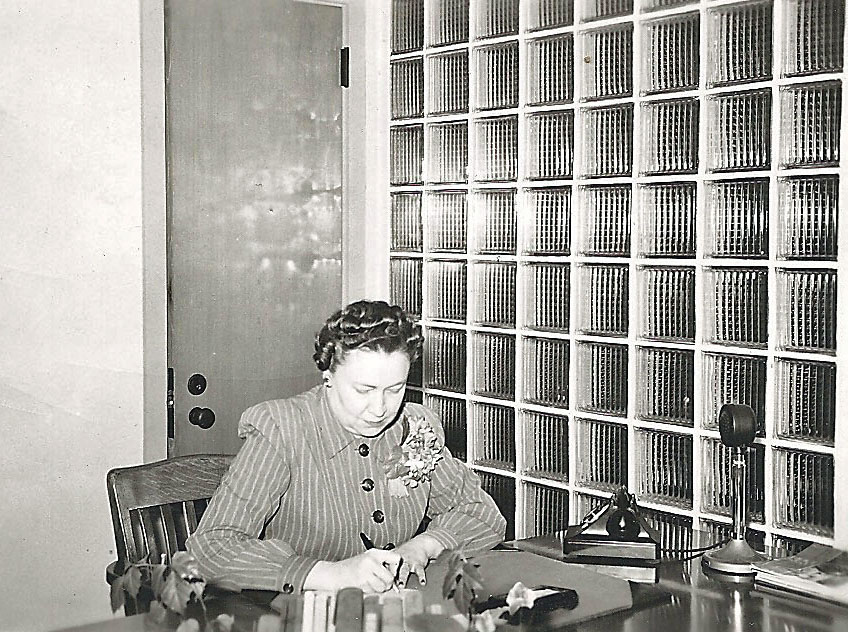
During World War II, Brookside was used to distribute ration books and to sell bonds and stamps, purchasing a jeep and an ambulance with the proceeds from those bonds.
In 1946 Brookside was so overcrowded that the Sixth grade had classes at the High School.
1947 PTA Notes:
55 windows broken this summer – give children a pep talk on the cost of the windows. Supt. Domian spoke in regards to enlarging Brookside School to have 18 rooms. Questions asked regarding the absence of a gym or auditorium in present building plans answered by Domian and Mr. Kobs – school board member. Safety was always a concern of Brookside parents, particularly in the days when there was an at-grade crossing at 41st St. PTA notes from 1947 indicate that the “highway situation is being checked” and that either an underpass or overpass was promised for the intersection. Meanwhile, flasher-type signals will be set up by the State Highway Department to slow traffic, and a policeman was always on duty.
1947-48
In February 1948 the School Board bought two lots on Vernon Ave. just south of the school. With the other two lots they already owned, they would make room for a large playground and ball field. The houses were moved by August 15, 1948.
Much-loved custodian Axel Peterson began his 25-year run at the school in 1948.
1948-49
On March 8, 1949, a Dedication was held for a 12-room addition. Work had begun in July/December 1947. It included a library, kindergarten rooms on the south side, gymnasium, and a basement that included a lunch room and little theater. The architect was William Townes of Haxby, Bissell & Belair. Music was provided by the Teenettes, the Bond Sisters, and the Senior Accordion Ensemble of the Professional Music Center. That same year, the PTA donated a baby grand piano to the school.
1949-50
Enrollment peaked at 1,132 in 1949-50. Five periods were needed to accommodate the lunch program. Seventeen buses were needed to transport students, and Kindergarten met in triple shifts. (Another report set enrollment at 790 in 1950, with 21 teachers.) One report is that the expansion of Eliot relieved the pressure of such high enrollments. The new gym allowed for the first of many school carnivals in May 1949.
In January 1950 the date of a planned paper sale (drive) had to be changed because of the appearance in Minneapolis of Gene Autry.
1950-51
The number of students in school year 1950-51 was 957. The PTA had voted to buy some new drapes for the teacher’s lounge, but the room had to be made into a classroom. Members of the PTA were treated to a slide show by Mrs. Swelin entitled “A Day at Brookside.” In January 1951, National Photo Studio took pictures of students. Those pictures are not in the Historical Society’s collection.
1951-52
School Year 1951-52 brought an enrollment of 1081 students. The Brookside PTA tried to buy a second phone for the office – the school district eventually paid for second phones in all schools. Instead, the PTA bought audio visual equipment and filmstrips. In February 1952, children were asked to keep their dogs at home, as there had been several incidents near the school. Parents wanted a higher fence between the front playground and the highway, which was Right There – no service road.
1952-53
On January 5, 1953, Blanche Boyce died at age 69 of complications after she fell while taking down a Christmas tree at the school. She had taught at Brookside since she came to town in 1926, teaching 4th and 5th grades. In February 1953 the Brookside PTA established the Blanche Boyce Memorial Fund, to be used for the purchase of library books. At that time, the PTA declared “When and if they day comes that our library is not used as a classroom, a plaque will be put above the door dedicating it to Miss Boyce.”
1953-54
On March 9, 1954, the female members of the Brookside PTA enjoyed a fashion show sponsored by Cook’s Family Apparel (Miracle Mile), while dad was invited to a “smoker,” where the men would view a film on fishing and enjoy “He-Man” refreshments. That probably didn’t mean beer. On May 21, 1954, the Brookside PTA’s annual carnival drew 3,000 people for a night “Under the Big Top.” The carnival featured a freak show, fishpond, a variety store, miniature bowling, merry-go-round, and airplane and auto rides. Little boys could be made up as clowns, and little girls could be made up as movie queens.
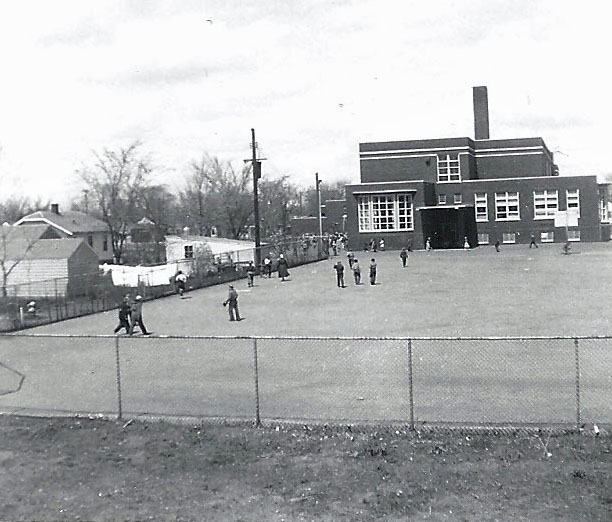
In 1954 two additional lots were purchased and two houses were moved to increase the size of the playground even more. Photo courtesy Frank Motzko.
Also in 1954, Dr. Francis Gamelin, child psychologist, mental hygienist, and senior counselor at the University of Minnesota spoke about behavior characteristics and emotional stability in the Grade School-age children. Dr. Gamelin, the father of five boys, had also spoken the previous year. His topic was “Children Need More Than Love.”
1954-55
On February 8, 1955, the Brookside PTA sponsored a Style Show featuring fashions by Roy H. Bjorkman, Inc. (women) and Juster Bros. (men). On March 8, 1955, Mr. Philip E. Ploumen of the Hennepin County Home for Boys spoke to the Brookside PTA on “Boys in Difficulty.” “Mr. Ploumen will discuss this all-important and daily increasing problem regarding juvenile delinquency, chief causes, general patterns it follows…”

1954-55
No delinquents here: in 1955 Brookside won the 5th Grade Championship (Basketball). Ken Rasmusson was the captain. The Spring carnival (May 21, 1955) promised no squirt guns and no balloons.
1955-56
Governor Orville Freeman cut a birthday cake on March 13, 1956 at Brookside PTA’s silver anniversary. He was the guest speaker on the subject “Problems of Education in Minnesota.” Also on hand were Mayor Fernstrom and Superintendent Enestvedt. The 52-piece Hamline University Concert Band provided musical entertainment.
The 1956 Spring Carnival netted over $2,000.
1957-58
On March 11, 1958, Mr. Leonard Jones spoke to the PTA about Civil Defense and plans for a Trial Run of Evacuation: “Learn where and how your child will be sent to safety.” The 1958 Carnival was held on April 26.
1958-59
During the 1958-59 school year, Brookside School had 705 students and 25 teachers. There were 80 students in the school patrol.
1959-60
The 1959-60 school year saw 725 students and 23 teachers. 1959 may have been the debut of the “Brookside Monkey,” a wooden little guy who was given to the classroom that had the highest rate of PTA membership. The major PTA event of 1960 was a book fair, held on April 23. Activities included a cake walk, fish pond, food, books, bingo, Bozo the Cop (he cost $25), movies, and rides. Prizes included two ant farms. Unsold books went to the Shakopee and Sauk Center Detention Homes for Girls and the Fergus Falls School for the Mentally Retarded. Some major electrical work had been done in the summer of 1960.
1960-61
The 1960-61 school year came with 725 pupils and 23 teachers. As usual, the PTA paid for Christmas trees for every room. On November 15, 1960, a pupil-teacher committee was facilitated by (not making this up) Dr. Ned Flanders and Richard Dawson.
LIFE ON THE HIGHWAY
The intersection of Highway 100 and 41st Street was a problem for the school, because at least half of the students lived on the east side of the highway. One former school patrol member remembers that in his day there was not even a stop sign, and the kids had to stop traffic on their own. Of course, the highway was not as busy as it is today and the speed limit was lower, but it was a dicey situation, and the police were not always there to help. Eventually a stop sign was added, and then a stoplight. Finally a footbridge was built, with a rail to help take bikes up and down.
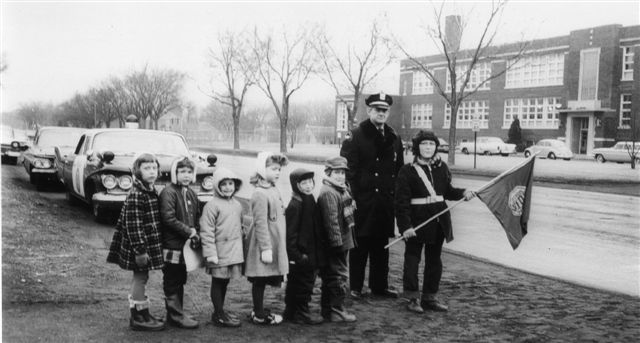
In 1961 Dr. Harold Pluimer, Science Consultant for the State of Minnesota Department of Education, spoke to the Brookside PTA on “Exploration of Space – What are our Future Space Plans?” He brought with him NASA models of space vehicles to be launched during the next 10 years.
On April 13, 1961, the Brookside PTA sponsored a “Movierama” at the 7-Hi Drive In on Highway 7. A caravan of cars was to leave from Brookside School, led by Police Chief (and Brookside parent) Clyde Sorenson. Mr. Maitland Frosch, owner of the Drive In, opened the theater a day or two before its grand opening. “Challenge the Wild,” a nature film from 1954, was shown along with five cartoons. The movie had a Legion of Decency Rating of A-1.
Plot Summary for “Challenge the Wild” (1954):
A family-affair wild-life documentary that follows George Graham and his family, wife Sheilah (who IS NOT the writer and Scott Fitzgerald paramour in any size, shape, form or fashion) and their young son and daughter, as they depart California for the Canadian north country well armed with guns and cameras. You have to have both to shoot animals, although wife Sheilah (still not the “Beloved Infidel” Sheilah) bags a couple of cougars with bow-and-arrows. Somebody somewhere thinks a real-life woman played by Deborah Kerr could do that? The kids get some cuddly scenes playing with some orphaned bear cubs, that might have still had parents if the Grahams hadn’t been around. (summary written by Les Adams).
In May 1961, the PTA wanted to buy a freezer for the school, but the wiring was inadequate.
1961-62
The 1961-62 school year had 700 students and 23 teachers. In September 1961, bunches of “space balloons” were launched from Brookside. These were helium-filled balloons with cards inside that instructed the finder to contact the school to see how far the balloon had gone. On November 21, 1961, “Civil Defense – is it Sense or Nonsense?” was the topic of the Brookside PTA, led by Norris Lokensgard. This meeting was devoted to basic facts about nuclear blast and radioactive fallout effects. The Survival Preparedness Committee provided a report that determined that busses could not be mobilized in such an emergency, and parents were urged to practice a “walk home” drill.
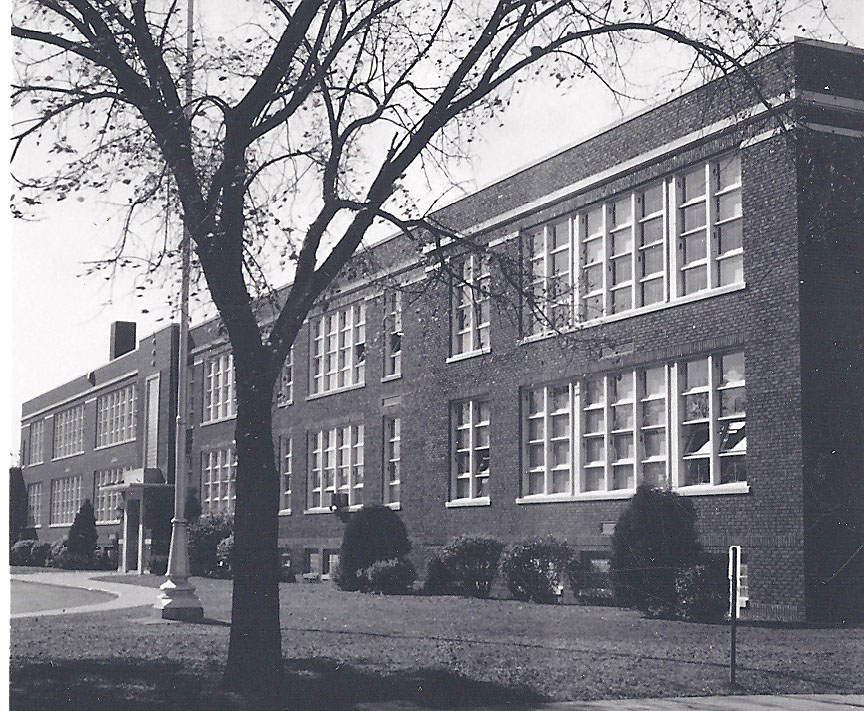
On January 16, 1962, Dr. Arnold Anderson gave a talk on “Sex Education of the Elementary School Child.”
On March 3, 1962, the Brookside PTA held a phenomenal Space Age Fair organized by Alice-Jean and Bob McFarlin. In addition to the fair-like activities of the beanbag toss, Dip the Duck, Fish Pond, and Flip the Cat, there were a series of special science and space displays that were borrowed from various large industries and the armed forces. These included:
Ford Motors: model cars 3M: generators to power TV, coast guard beacon and radio Minnegasco: radio powered by heat NSP: a model of a totally electric home and information about nuclear energy Northwestern Bell: early model of Vanguard satellite Navy: authentic space suit, display of Polaris missile Air Force: authentic space suit, film on sonic boom Marines: a movie about Marines in space, narrated by Jack Webb Minneapolis Honeywell, which was staffed by Brookside parent Orly Thornsjo, who was the head of the Apollo Program for Honeywell. Jet engine Echo 1 “Satelloon” Working model of atomic power plant (can that be right?)
As a follow-up, Dr. Harold Pluimer, science consultant from the Minnesota Department of Education, gave a talk on “Exploration of Space – What are our Future Space Plans?” on March 20, 1962. The PTA talk was attended by sixth graders. In the spring of 1962, the PTA held another movie night at the 7-Hi Theater. The movie had something to do with Lippizaner Stallions in WW II, reportedly. The PTA netted $700 from the event.
1962-63
The 1962-63 school year had 687 students and 23 teachers. The PTA that year bought Christmas trees, patrol badges, and a transistor radio for Civil Defense. Some of the funds for these purchases came from the sale of “Chicken Fat” records for 75 cents, courtesy of Bert Jones. On January 15, 1963, the PTA heard Prof. Robert Smith for an ominous-sounding talk entitled “Don’t Deny your Children Discipline.” Also that month, Dick Silva spoke about the St. Louis Park Community Theater. And in response to continuing concern about the traffic on Highway 100, Chief Clyde Sorenson insisted that a policeman was always on duty and that was good enough. On February 19, 1963, the PTA heard Mrs. Mildred Roberts, Consultant for Family and Children’s Service, discuss “Growing Pains.” Topics included when children should start dating, when girls should be wearing nylons or lipstick, and how parents can say “No” when everyone else says “Yes”! In the spring of 1963, there was no movie night as in previous years, but the PTA sold tickets to the 7-Hi that could be used from April 1 to May 21. This was not as successful, and they only made $450.
In 1963, over 1,700 local residents signed a petition asking the State Highway Department to construct a footbridge over Highway 100 at Brookside School. The footbridge was planned for 1967-68, but parents wanted the bridge earlier. The PTA stated that the intersection had the highest volume of traffic of any school crossing in Minnesota, and constituted an extreme hazard for the 350 Brookside and Most Holy Trinity students who crossed it every day.
Also in 1963, Mrs. Mildred Roberts, Consultant for Family and Children’s Services, gave a talk to the PTA on “Growing Pains.” Some of the issues discussed were:
Should sixth grade girls wear lipstick, nylons, and back comb their hair Should elementary school kids date and go steady? What is the recommended bed time? Should boy-girl parties be allowed? Should there be a dress code for fifth and sixth graders?
1963-64
In November 1963 the PTA sponsored a talk by Mr. Wagner “Wag” Collins, co-author of the “new math” books being introduced in Park Schools. His Modern Arithmetic Through Discovery books were based on his study of new math at the University of Illinois.
Now this was a problem. On March 17, 1964, the Brookside PTA hosted Judge Donald T. Barbeau as he discussed the topic “Teenagers in the Courts.”
The Brookside PTA sponsored a Hoot-nanny at the school carnival on April 11, 1964. Those who could sound like the Christy Minstrels (presumably the New Christy Minstrels) were encouraged to participate. Seven ponies were available for riding, and the prizes included transistor radios. Other activities included a trading post, country store, chuck wagon, merry-go-round, make-up booth, candy peg board, and a fish pond. This event marked the debut of the Jaguars rock band, made up of Brookside students Bobby Rifkin (age 8), and Stephen Rifkin, Craig Schadow, and Gary Oxman (all age 12). Drummer Bobby would go on to play with Prince and the Revolution.
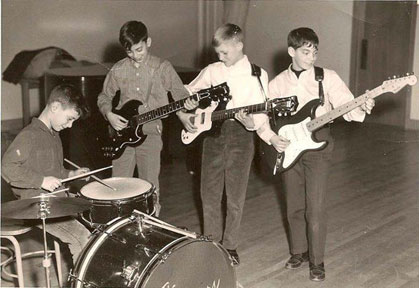
Other activities in the spring of 1964 included talks on Tuberculosis, the “new math,” a clothing drive for Save the Children, Supt. Enestvedt’s trip to Sweden, and a talk by Judge Eugene Minenko, who attributed 8,000 arrests of minors to a fast world, living in the shadow of nuclear war, and a breakdown in the family. In 1964!
1964-65
A December 15, 1964, PTA Holiday Tea was themed “Feminine Fashion Possibilities Unlimited,” and featured Mrs. Naomi Ward, a dead ringer for Mrs. Howell. Naomi had been a fashion model, and was in fact contracted out of the Eleanor Moore Model Agency for $35. Among her comments were “we women should try to look better in the morning than we usually do,” and that “wigs and furs are the most expensive items in one’s wardrobe.”
In April 1965, Brookside was one of four schools that helped sponsor the production “Many Moons,” as performed by the St. Louis Park Community Theater. School children helped sell tickets and helped in other ways, and in exchange got some of the proceeds.
May 1, 1965 was a Mother’s Day Pancake Breakfast. It was Mother’s Day Out, and the dads did all the work.
1965-66
On February 15, 1966, the PTA was treated to a “Brookside Fun-Nite,” featuring the Nordstroms and Alwins presenting songs, dances, and Snappy Patter.
In March 1966 it was the PTA who apparently broached the subject of sex education by screening the films “Boy to Man” and “Girl to Woman” for parents. The films were then shown to sixth graders – girls in the little theater and boys in the AV room. Parents and a doctor were present.
1966-67
March 1967 featured a Whist Party that seemed to have drawn hundreds of players. Another activity that year was a pancake breakfast on April 22. The PTA sponsored a collection of clothes for Applachia, and toothbrushes and soap for children in Viet Nam.
1968-69
In the summer of 1968 Brookside underwent $59,400 in alterations to scale down when Susan Lindgren was built. The largest class of boomers had already passed through, leaving Brookside with a dramatically smaller enrollment. Students were reassigned from Ethel Baston to balance things out. Harvest Pancake Day was held on October 28, 1968.
1969-70
School enrollment in 1969-70 was 461 students. In 1970 there was a student fair that drew 800 people. That year the school participated in KSTP Project ’70, which had to do with drug awareness.
1970-71
On April 22, 1971, Brookside held a “Family Night” that featured a book fair, magic show, food, prizes, and a sixth grade science fair.
1971-72
In September 1971, the PTA sold red and white sweatshirts adorned with the school’s new mascot, the Tiger. That December the PTA was able to buy new drapes for the teacher’s lounge and an 8 mm camera and projector. In February 1972, the PTA paid to have furniture in the teachers’ lounge reupholstered and, in an indication of changing times, a tennis shoe fund for kids who could not afford them. April 13, 1972 was the school Carnival, which featured cake walks, magic by Donn French, and a drawing for bikes, as provided by Shoppers’ City and drawn by Axel.
On May 21, 1972 Brookside held “Agnes Preus Day,” honoring the 46-year career of this first grade teacher (16 years in St. Louis Park). The program featured the first student she ever taught back in 1927 in Albert Lea.
1972-73
A school carnival was held on April 5, 1973, much stripped-down from the school’s heyday.
1974-75
Brookside closed for good as a Park elementary school in 1975 with a final enrollment of 304 students. A Farewell to Brookside program was held on May 4, 1975.
BROOKSIDE COMMUNITY CENTER The building became Brookside Community Center, holding its Grand Opening on September 21, 1975. Activities planned included housing adult education, day care, nursery, health service, ESL, children’s library, general recreation, college-level classes from Mankato State, adult leisure classes and more. Tenants included the Braille Sports Foundation, a Loan Closet run by the auxiliary of Suburban Public Health Nursing Services, the West Hennepin Human Services Planning Board, the Suburban Recreation Association, and Metropolitan Open School. In February 1976, Discoveries for Children Montessori School became a tenant, headed by Cindy Albrecht and Heidi Dorfmeister.
After talk of selling the school in 1994, it got a reprieve in October 1995 when Minneapolis leased the school because of a shortage of space in its own system. The school hosted 260 students from Kindergarten to Grade 5, with an emphasis on performing arts. This arrangement continued for ten years.
REDEVELOPMENT
Finally the School Board was forced to sell the building, fortunately to a developer who built residential space while keeping the physical integrity of the main building intact. Master Builder created 27 condos in the old school, and townhouses and single family homes on the grounds of the expansive playground. A brick from the demolished gymnasium can be found at the Historic Depot.
The Historical Society also tried to save some of the colorful mosaics that were placed above the pint-sized water fountains. One was successfully restored by Manny Camilon and is on display at our office!
BROOKSIDE’S PRINCIPALS
Blanche Boyce: 1921
Ethel Baston: 1934-36
Erwin Welke: 1936 to 1943 (left middle of year)
Lucille Swelin: 1943 to 1968
James Wason: 1968 to 1972, 1973 to 1975
Gene Brack: 1972 to 1973
BROOKSIDE’S CUSTODIANS
1924: Mr. Harvey
1929-30: T. J. Murphy
1937: Edward Jenneke
1937-43: Fred Lupien
1948-73: Axel Peterson
The Historical Society has the following materials from Brookside School:
PTA YEARBOOKS 1952-53, 1954-55, 1955-56, 1956-57, 1957-58, 1958-59, 1959-60, 1960-6,1 1961-62, 1962-63, 1963-64, 1964-67
1950 PHOTO ALBUM
CLASS PICTURES 1924-28, 1956-57, 1958-59, 1960-61, 1962-63, 1964-65, 1966-67, 1968-69, 1969-70, 1970-71, 1971-72, 1972-73, 1973-74

